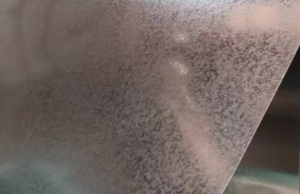Stainless steel, a high-alloy steel that exhibits remarkable resistance to corrosion, has been a cornerstone of the metallurgical industry for decades. Its ability to maintain an aesthetically pleasing surface without the need for painting or other finishes has made it a favorite among manufacturers of various products, from kitchenware to industrial components. Among the various grades and types of stainless steel, #4 stainless steel stands out as a specific and distinct variety.

He aha ka #4 Kuhili ʻole?
Firstly, it is important to clarify that the notation “#4” in the context of stainless steel does not refer to a chemical composition or a specific alloy formula. Instead, it is a designation related to the surface finish of the steel. The “#4” finish, commonly known as a brushed or satin finish, is achieved through a specific mechanical process that involves brushing the steel’s surface with abrasive brushes or wire wheels. This process removes minor imperfections and gives the steel a uniform, matte appearance.
The #4 finish is often chosen for stainless steel products that require a non-reflective surface. It is particularly suitable for architectural applications, such as railings, cladding, and other exterior features, where a smooth yet non-glaring finish is desired. Additionally, the #4 finish is also preferred in some industrial settings where a durable yet aesthetically pleasing surface is required.
Now, let’s delve deeper into the metallurgical properties of stainless steel itself. Stainless steel’s corrosion resistance stems from the addition of chromium i ka kila kila. The chromium content forms a thin oxide layer on the steel’s surface, protecting it from further oxidation and corrosion. Depending on the chromium content and other alloying elements, stainless steel can be further classified into different grades, each with its unique properties and applications.
The #4 stainless steel, despite its specific surface finish, can belong to any of the main stainless steel families, such as austenitic, ferritic, martensitic, or duplex stainless steel. Austenitic stainless steels, for instance, are non-magnetic and have excellent corrosion resistance and formability. They are commonly used in applications that require high toughness and corrosion resistance, such as food processing equipment and chemical plants. Ferritic stainless steels, on the other hand, are magnetic and exhibit good corrosion resistance and oxidation resistance. They are often employed in automotive exhaust systems and heat-resistant applications.
ʻO nā kila kila Martensitic are known for their high strength and hardness, making them suitable for applications that require high wear resistance, such as cutting tools and surgical instruments. Duplex stainless steels offer a combination of austenitic and ferritic properties, providing excellent corrosion resistance and mechanical strength.
In terms of mechanical properties, #4 stainless steel, regardless of its underlying microstructure, typically exhibits high tensile strength and yield strength, along with good ductility and toughness. These properties allow it to withstand various loads and stresses without failing.
Moreover, stainless steel’s resistance to corrosion is not limited to atmospheric conditions. It also exhibits good resistance to a wide range of chemicals, acids, and alkalis, making it suitable for use in harsh environments. This property, combined with its excellent mechanical properties, makes #4 stainless steel a versatile material for various industrial and architectural applications.
Panina
In conclusion, #4 stainless steel is a specific surface finish applied to stainless steel that offers a uniform, matte appearance. It belongs to a broader category of stainless steel alloys, each with its unique metallurgical properties and applications. The #4 finish, combined with the inherent properties of stainless steel, makes it a highly desired material for both aesthetic and functional reasons.
Thank you for reading our article and we hope it can help you to have a better understanding of the #4 Stainless Steel. If you are looking for #4 Stainless Steel suppliers and manufacturers online now, we would advise you to visit Kinohi Pilikino Sino no ka mea, 'ike hou aku.
As a leading supplier of stainless steel products from Shanghai China, Sino Stainless Steel offers customers high-quality #4 Stainless Steel, nā wili kila kila, nā ʻili kila kuhili ʻole, nā lau hoʻohiwahiwa kila, paipu kila kila, paipu kila kila, nā pā kila kila, a nā pahu kila kila ma ke kumu kūʻai hoʻokūkū loa.
 : +86-18621535697
: +86-18621535697  :export81@huaxia-intl.com
:export81@huaxia-intl.com